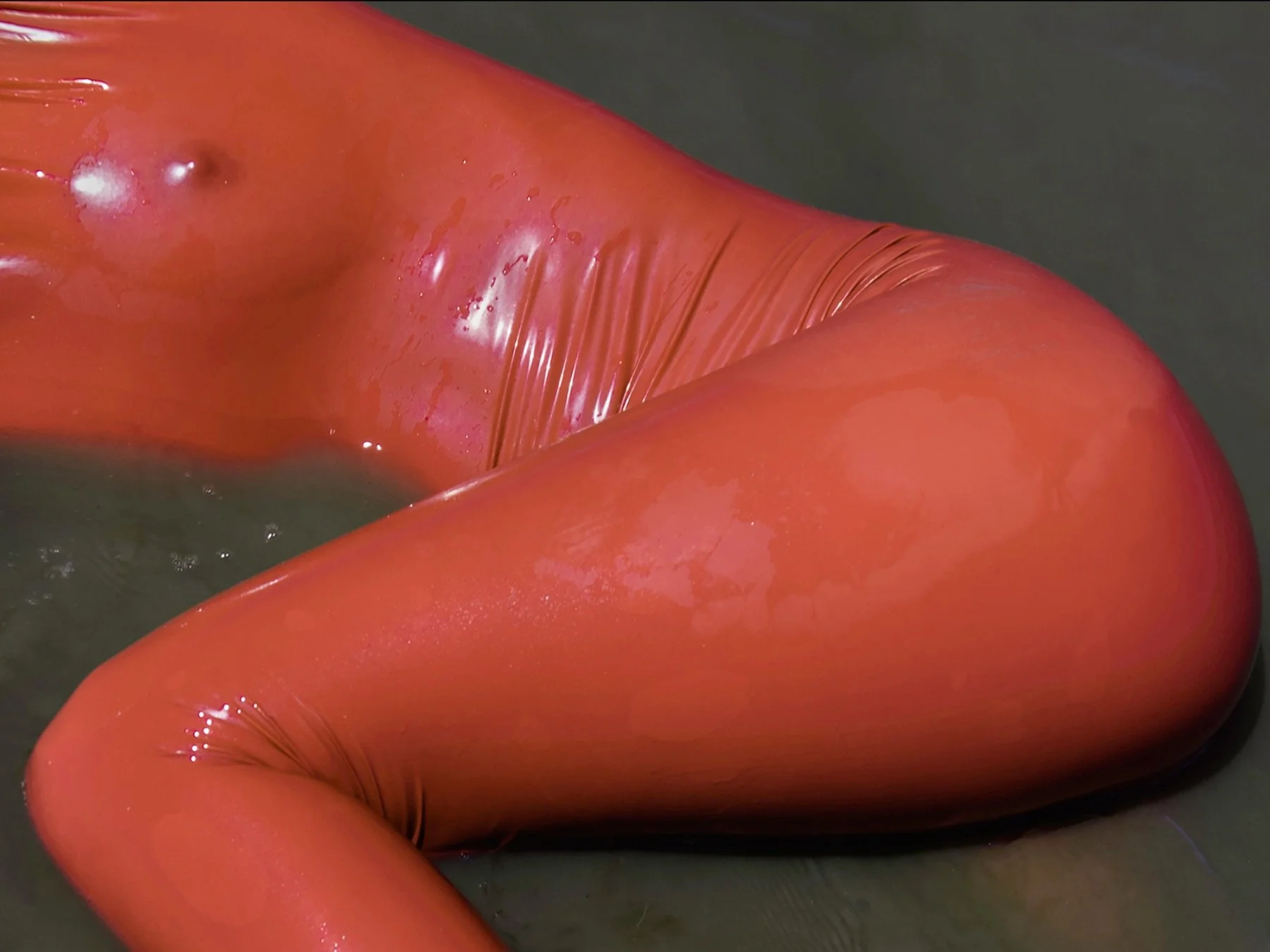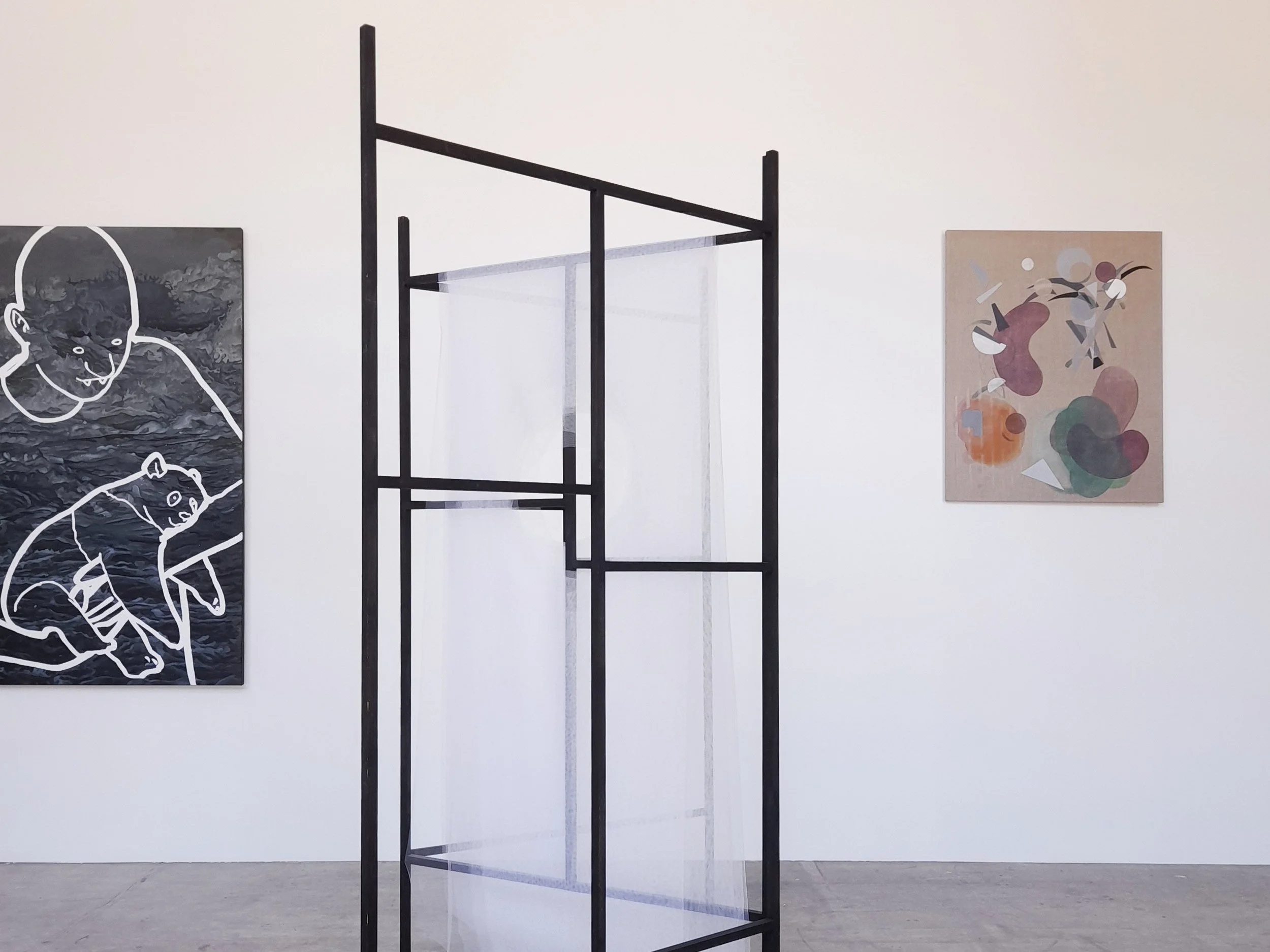Desired Path, Image courtesy of the artist.
Laura Thompson, our European Associate recently sat down with Berlin-based Australian artist Karla Marchesi to discuss her practice and exhibition at Jan Manton Gallery in Brisbane.
Karla’s work is one that questions and attempts to make sense of the world. As the polarities of equality are drawn further apart, Karla implements art historical appropriation and purposeful disruption to illustrate both tension and connection in the present.
Recently I had the pleasure of writing about your work for an upcoming publication for the ACU Art Collection. The publication highlights two of your works in the ACU collection which explore vanitas painting to question the contemporary moment. The pieces implement the ‘impossible bouquet’. Could you describe this concept and how it connects to your practice?
The ‘Impossible Bouquet' is a genre of Still life painting popularised in the Dutch Golden Age by painters such as Jan van Huysum (1682–1749) and Rachel Ruysch (1665-1750). These floral arrangements depict botanical species which cannot naturally bloom together. These compositions reflect the bourgeoning middle-class wealth and first manifestations of market capitalism, as demonstrated by the inclusion of prized Tulips. The demand for such rare flowers at the time resulted in one of the most famous asset bubbles and crashes, the extent of which was subsequently exaggerated, forming a parable of greed and excess.
My practice has long been grounded in art history, primarily looking to genre painting as a language through which to deconstruct and explore contemporary concerns. Preceding my interest in the Impossible Bouquet, I was painting densely cluttered suburban interiors, portraying the figure in its absence. I coined the term ‘anti-still lifes’ to describe these piles of detritus which amassed into recognisable yet alien forms.
In 2016 I came across the work of American artist Taryn Simon’s photographic series ‘Paperwork and the Will of Capital’ (2016), giving me pause to see this historical genre anew. Simon recreated the floral centrepieces arranged on the tables where 36 international treaties were signed, stating these bouquets sat between powerful men and the consequences their pen derided. This aligned with my musings at the time, reflecting on contemporary anxieties and uncertainties of living in late-stage capitalism. I’ve continued to employ the Impossible Bouquet as framework in subsequent work extending my remit to broach themes such as the existential threat of climate change, autobiography, gender, sexuality and identity.
Your work often weaves together the transience and absurdity of existence. When the weightiness of the world gets too heavy – be it through a pandemic, war or environmental collapse – how does dark humour play a role in your work?
Like the Dadaists or Surrealists of the early 20th century, or Existentialist philosophers of the mid-20th century, in the face of a world gone mad agency is found through humour and an embracing of the absurd. It is a means to process paradoxes and powerlessness, allowing space for humanity, connection and release.
My practice has long been a site where I reckon with the contradictions and uncertainties of modern living. This took a quieter, more self-reflective tone as a younger artist, but with compounding existential threats as you described, a new approach has been necessary. I’ve recently come to think of my studio as the only site I can control and have made it a point to practice joyfully there.
Without inhibition I feel like I’m now throwing everything at the wall and seeing what sticks. Leaning into autobiography, psychology and personhood, my recent work has allowed space for an absurdist, affirmative nihilism to theatrically come to the fore. I’ve reframed my focus to celebrate colour, process and problem solving, viewing each painting as a site ripe for invention, untethered to a specific outcome, and having a lot more fun along the way.
Desired Path, Image courtesy of the artist.
Your latest body of work, ‘Desire Path’ which opens at Jan Manton Gallery this June, explores the pitfalls of modern dating and finding agency in female pleasure. The exhibition is framed by the story of Baubo, the ancient Greek goddess of mirth. Could you briefly tell us Baubo’s story and how it connects to the series?
In 2021 I was particularly moved by the outpouring of fury expressed by women and allies in Australia’s belated #Metoo moment culminating in mass March 4 Justice demonstrations. I had previously been reflecting on my own experience growing up in the 90s and the inherent contradictions of a culture which preached appeasement of harassers for safety, a feminism which embraced hyper-sex positivity but within a frame of patriarchal pleasure and occupying a body that didn’t solely feel like it belonged to its occupier. Taking up space as a woman has always been complex.
As I processed a long tampered rage, I didn’t want to focus on a re-airing of traumas but to find points of untold celebration and agency in this historical moment. In my research I came across the story of Baubo, who became a central figure anchoring the series.
A crone-like figure known for her liberated sexuality and bawdy humour, the Baubo is said to have jested with the goddess of Agriculture, Demeter, in an attempt to break her long depression which fallowed the land following her daughter Persephone’s running off with the God of the underworld, Hedes. Baubo impulsively lifted her skirt revealing her vulva, sparking laughter in Demeter and motivating to find her daughter. Clay figurines of the Baubo typically condense the female form merging face with torso and are adorned by a fabric crown which alludes to the lifted skirt.
As a guide to the exhibition, Baubo invites the viewer to embrace a female-led irreverent and subversive humour, finding joy, power and pleasure embodied in female sexuality and identity, celebrating the feminine in its complexity.
What other motifs will we find in the series?
Succulents and cactuses are staged as anthropomorphic protagonists, symbolising violent self-protection, danger and vulnerability. Curtains appear in various iterations – fabric or human hair - creating tactile and intimate backdrops and framing devices; simultaneously hiding and revealing, delineating public and private space and metaphorically functioning as a site of psycho-sexual projection. Fecund fruits and pastoral landscapes echo the Baubo myth. Art historical references to the heighted excess and visual pleasure of the Rococo period feature throughout the series, reinterpreting Jean-Honoré Fragonard’s The Swing (c.1767) and Fête Galante painting, depicting scenes of characters celebrating in amorous play in pastoral settings.
Morning Glory, 2022.
Lastly to wrap up, you’re originally from Brisbane but have called Berlin home for a decade now. As a painter, what has living abroad offered you?
Living abroad has given me critical distance to develop as a person and painter. Along the way I have worked for a few German artists: Anslem Reyle, Martin Eder and Helene Appel. Being invited into their studios and privy to their work processes has given me confidence, sharpened criticality and a broader material language to draw on in my own practice. So to, a decade away from my primary context has offered me space to reflect and find the voice of my practice, coloured by a broad international arts community which has challenged my preconceptions.
Karla’s exhibition Desire Path is on view at Jan Manton, Brisbane from 8 – 28 June 2022.
Please contact Cornah or Alana for purchasing details.










